The Drive and its partners may earn a commission if you purchase a product through one of our links. Read more.
If I am rubber, and you are glue, I can do burnouts, and you can’t. *sticks tongue out*
Childish sayings aside, burnouts are one of those things you can love and hate at the same time. They might be fun to do, but you also understand why they have a negative reputation—and why Mustangs are the cliche car associated with the term...
In the right situation, burnouts do have a genuinely real purpose, but that situation is not a busy street or a packed Walmart parking lot. Everybody deserves to try it at least once, and we’d like to help you figure out the proper time and place to do it.
Unsure how it works? The Drive’s smokey editors will tell you how and when to let the clutch fly. Let’s get to it!
Before we get into any of this, we need to drop some disclaimers on you.
Only attempt burnouts under the supervision of professionals in controlled areas where it is legal. The Drive is not responsible for any damage, accidents, or any legal consequences you may encounter. Likewise:
Burnouts are illegal in virtually all places.
Burnouts can be dangerous.
Burnouts can ruin car parts.
Burnout can result in redlining and hurt your car’s engine.
Burnouts are loud and annoying to most people.
Burnouts are bad for the environment and your health when smoke is injested.
Burnouts mark up the pavement.
S, R, and T are the only letters left after the burnouts burnout., FCABurnout is the act of spinning your car’s wheels while staying in place, at least initially. The friction of the rubber spinning on pavement produces showy billows of smoke.
Burnouts should not be taken lightly. Heed these precautions if you’re going to attempt burnouts.
Attempting a burnout for the first time at an auto show or in some other busy parking lot is the worst possible thing you can do, and you might do some damage to your car and/or others. With a professional on hand, go to a completely empty lot with scarce light poles, and practice doing them with no people or cars around you.
If you smell something other than burnt rubber, it might be your clutch. Back off and let it cool down before attempting again. You might not be lifting off the clutch fast enough, and you never want to ride the clutch.
Everybody has seen the videos of a burnout turning into an accident that caused tens of thousands of dollars of damage. Never attempt burnouts near poles, walls, curbs, islands, parking barriers, or anything else your car could run into.
Anytime somebody does a burnout, there are risks of flying road debris, flying broken parts, and rogue Ford Mustangs. Keep your distance if you’re watching one, and make sure nobody is around if you’re doing one.
Keep your distance if you’re watching one, and make sure nobody is around if you’re doing one.
Because life is about the little things that make you happy. It’s crucial to find the small Ws that put a smile on your face, even if it comes with a minor cost. That’s why we’re all here to talk about cars, right?
In drag racing, there is a real purpose for burnouts. Cold tires have less grip and make for slower launches. So, drag racers usually spin the tires a bit to warm them up. Warmed up, they can grip the road better. This also helps clear the tire of any debris before entering the race.
A burnout before drag racing is expected., FCAIf you can use a clutch, you can do a burnout.
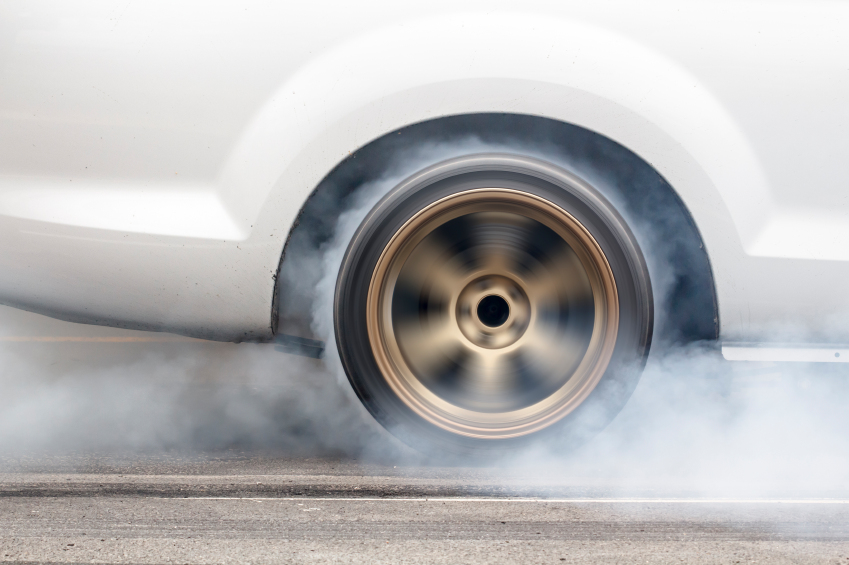
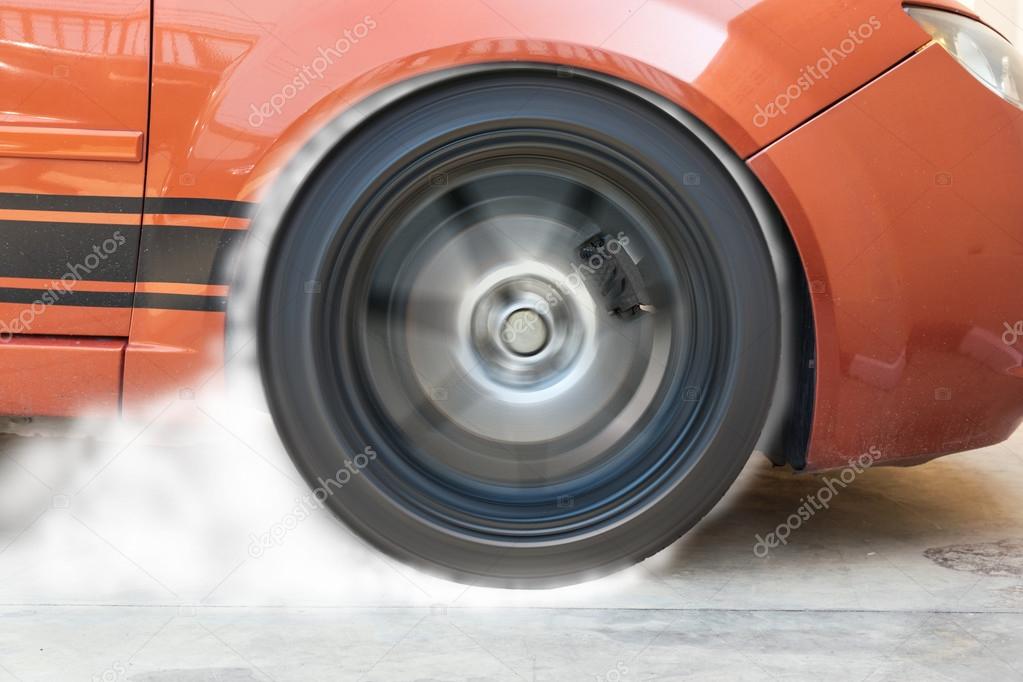 To repeat, this isn’t an exact range, and you’ll have to know and understand your car to know how high you should rev it. You need enough power not to stall, but not too much that you’ll burn your clutch. Just be careful not to get too close to redline.
To repeat, this isn’t an exact range, and you’ll have to know and understand your car to know how high you should rev it. You need enough power not to stall, but not too much that you’ll burn your clutch. Just be careful not to get too close to redline.Automatics can do it too!

You’ve got questions, The Drive has answers!
A. Yes. In addition to shredding precious tire tread and brake pads, you are also putting a lot of stress on the engine, drivetrain components, and everything else in your car that wasn’t designed to do extended burnouts in place.
A. Burnouts are illegal in virtually all public places.
A. Any car with a lot of power, a manual transmission, and rear wheel drive.
A. They can! At the end of the day, burnout is achieved by using the throttle and the brakes at the same time, so you’re trying to stop something that’s spinning very fast.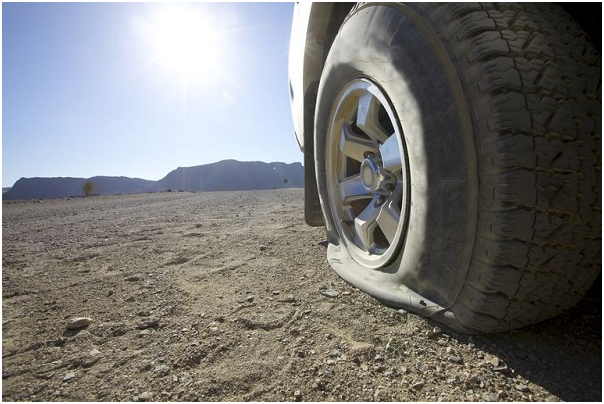 That’s going to wear your brakes.
That’s going to wear your brakes.
A. This will depend on the car, the tire, the driver, the location, and numerous other factors. Read more in our guide, How Long Do Tires Last and When Should I Replace Them?
A. Hold the gas and the brake, which should be the left and right triggers. On computers, use W and S.
We’re here to be expert guides in everything How-To related. Use us, compliment us, yell at us. Comment below and let’s talk! You can also shout at us on Twitter or Instagram, here are our profiles.
Jonathon Klein: Twitter (@jonathon.klein), Instagram (@jonathon_klein)
Tony Markovich: Twitter (@T_Marko), Instagram (@t_marko)
Chris Teague: Twitter (@TeagueDrives), Instagram (@TeagueDrives)
by Al Seizovic
73 shares
Last Updated on July 15, 2022
Pulling up to the stoplight with your 2002 Hyundai Tibouran at midnight, you get the bright idea: “I’m going to do a burnout, there’s nobody around”.
You throw the automatic transmission in “1”, hold the brake and the accelerator, then release the brake expecting to spin your tires like all the Fast and Furious movies!
Nothing happens? Well that’s probably because you didn’t read this AWESOME how-to guide on burnouts with an automatic transmission.
See Also: Measuring Horsepower (HP vs BHP vs WHP)
Table of Contents
They ENHANCE your life! There are few things more satisfying in the automotive landscape than an awesome burnout. The tires are spinning, you’re vaporizing tires, breathing in smoke, making a bunch of noise, and generally pissing off all of the grumpy people around you. It’s great!
The tires are spinning, you’re vaporizing tires, breathing in smoke, making a bunch of noise, and generally pissing off all of the grumpy people around you. It’s great!
Burnouts come in all shapes and sizes. You’ve got the big muscle car angry burnouts that you might see accompanied with a Dodge Charger, Ford Mustang, and maybe even an E63 AMG Mercedes!
On the other side of the spectrum, you have the squealy, nasty rubber burning sessions of the Honda Civic variety. You’ll be able to spot this species in the wild by a loud, raspy popping noise paired with a front wheel drive (FWD) hatchback looking as if it’s floating on clouds instead of front tires.
This is because those front tires are moving so fast as to create friction and heat, allowing the driver to burn rubber through the intersection. This can also be found with Subaru Impreza WRXs when they do their all wheel drive (AWD) launches from intersection to stoplight.
You may also spot a motorbike doing a burnout at a stoplight, which is another being altogether.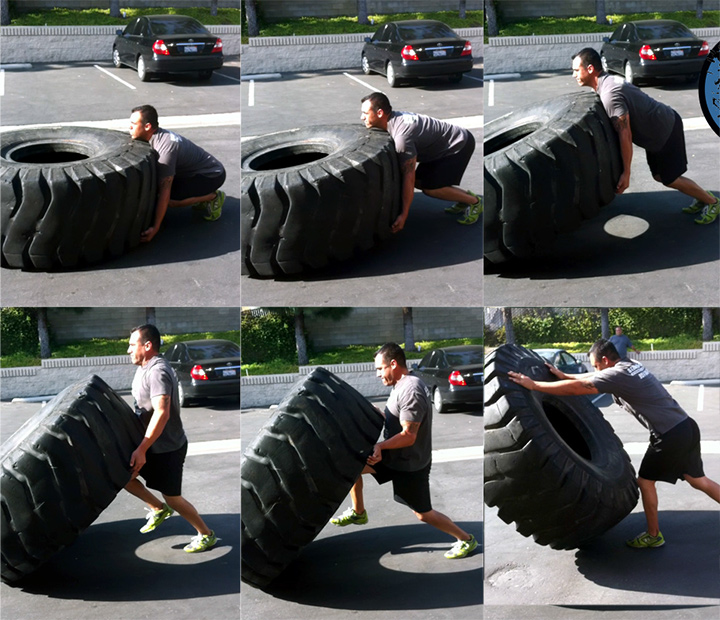 They’ll get all of the weight on their front tire, then rev the throttle all the way to the rev limiter making a WAHWAHWAHWAHWAHBRINNNGGGG sound as their tires reach terminal velocity.
They’ll get all of the weight on their front tire, then rev the throttle all the way to the rev limiter making a WAHWAHWAHWAHWAHBRINNNGGGG sound as their tires reach terminal velocity.
This behavior has been studied by biologists for at least a hundred years, yet the motives around displays such as this still perplexes us. Is it to throw up a middle finger to the law? Are they trying to warm up their new tires to grip more during an impending drag race? Or, do they simply just want to do it, so they do it?
Read Also: Differences Between AWD and 4WD
Although I don’t have a source on this claim, I feel it’s safe to say most of the burnouts you’ve seen have been in a manual transmission, rear wheel drive (RWD) car as it’s much easier. Just throw the transmission into first gear, push in the clutch, mash on the accelerator to build up the revs, then release the clutch quickly and you’ll be peeling out in no time.
Of course, this will happen providing you have enough power to break those tires loose. If not, you’ll roast your clutch, explode your drive shaft, blow up your diff, or destroy your transmission. That energy has to go somewhere, and if your tires are too sticky, you’ll break something.
Related: How to Identify Your Car’s Transmission
If you want to do a burnout, you are pretty much playing with fire here. Unless you have express permission by a landowner or it’s on your own property, you could get fined upwards of $1000 for damaging property.
This is because most parking lots have lines painted on them, and spinning your tires and otherwise acting recklessly is going to wear out those lines. Then, the property owner is going to have to pay to repaint those lines which will cost them money.
This is a first hand account, so just remember, the cameras on many of these private buildings surrounding parking lots are a lot better than you think.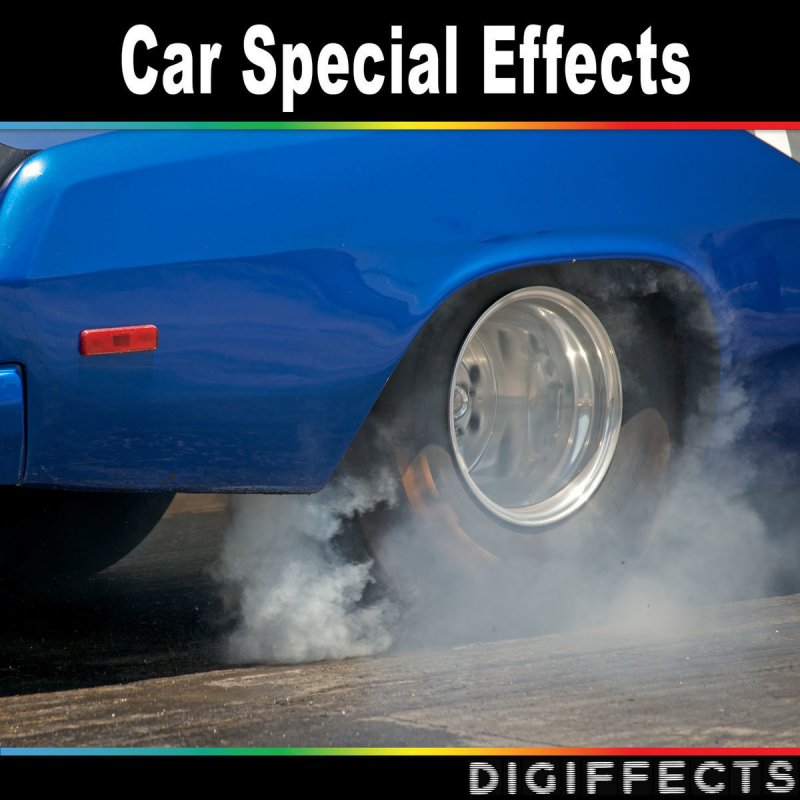 Hint hint: they can read your license plate!
Hint hint: they can read your license plate!
If you’re thinking about doing a burnout on a public road, there are some more considerations you should take. First, make sure there aren’t any people around, in the way, or in the oncoming traffic lane. You don’t want to end up like a Ford Mustang driver leaving every “cars and coffee” meetup (example below).
Also, keep in mind, this all needs to be considered before you do anything at all burnout or drift wise, as I’m already assuming you’re ok with breaking whatever law is preventing this in your area. From experience, we’re all going to do things that aren’t legal in our cars, and that just comes with the territory of owning an enthusiast car.
Also, there’s nothing in this article that will protect you from the law, you just need to be smart about this and never hurt another motorist or pedestrian.
See Also: What Can Happen When You Engage the Parking Brake While Driving
As stated above, don’t hurt anything other than your tires. Additionally, you’ll need to make sure you are in control of your vehicle because that’s your responsibility as a motorist.
Being able to do a sick burnout in Need for Speed doesn’t mean you can do the same thing on real life. Even better, sign up for a performance driving course to get real instruction and experience in a safe environment.
It’s also good to know that you’ll be wearing out parts quicker when you do burnouts in your car, so pay attention to the color of your transmission fluid, the smell of your clutch, and just check your car more often. As you add heat, power, and force, something is going to break.


If you aren’t getting the results you want, try some older rubber. Your local tire shop should have some old tires that aren’t being used, maybe they’d even give them to you!
Another idea is to spray water on the ground around the tire that you are trying to spin so you can decrease the traction, thus increasing the ease at which you can burn rubber. Oil and whatever other lubricant you want works too.
Also, I want to mention that if you can’t disable the traction control on your vehicle, you probably won’t be able to get very far on this quest because your vehicle will be fighting you every step of the way.
Categories General Tags automatic transmissionAsk a question, get an answer ASAP!
Worn-out tires should be disposed of only at specialized enterprises, since according to current legislation such waste belongs to the 4th hazard class.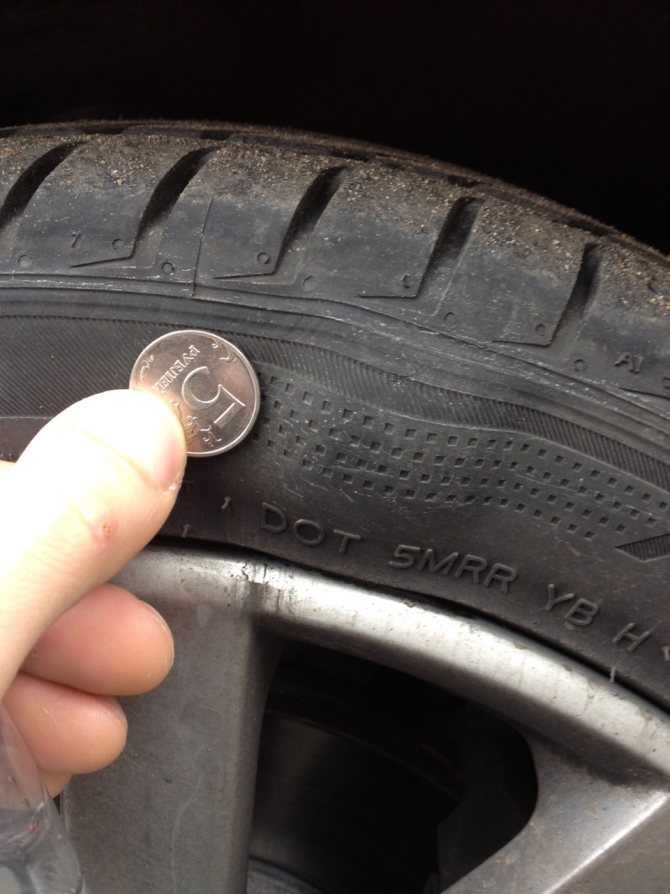 Old tires cannot be burned at an incineration plant, tires cannot be taken to a general landfill, buried in the ground or stored in a landfill.
Old tires cannot be burned at an incineration plant, tires cannot be taken to a general landfill, buried in the ground or stored in a landfill.
Harmful same old tires in that from them there is a constant evaporation of such harmful and carcinogenic substances as benzopyrene, dioxin, furan. Dangerous and highly toxic dust from tire . They decompose for about 100 years and during this time cause great harm to nature and man.
The most popular is to throw the old tires into a roadside ditch or leave them in the forest. … Another way to recycle is to take four tires to a solid waste collection point, that is, simply throw into the trash can.
After all, when burning, car tires emit toxic fumes, they can have a harmful effect on the environment, even if they heat up in hot weather. Therefore, tires are included in the list of waste that is prohibited for disposal, experts from the Ministry of Natural Resources and Ecology of the Russian Federation explain.
The recycling of tires must be combined with the production of secondary raw materials. As a result of recycling tires for recycling, natural resources are saved, in which the state is interested. Recycling tires by burning in ovens does not save natural resources.
- When a tire burns, a lot of pollutants are released into the environment - soot, sulfur dioxide, biphenyl, anthracene, fluoranthene, naphthalene, chrysene, pyrene, benzapyrene chlorinated dioxins, furans and phenols.
Car tires are classified as waste of III-IV hazard groups. Exhausted car tires have been actively used since Soviet times for arranging flowerbeds, parking lots, children's and even sports grounds. Flowers are planted in them, they separate lawns from the roadway, they are dug into the ground for children to play.
— tires must not be thrown into the garbage container in any case, since as it is written in the agreement with the garbage disposal company. Tires not allowed throw into ordinary landfills, for this the garbage company is really fined.
Tires not allowed throw into ordinary landfills, for this the garbage company is really fined.
To date, used tires can be handed over free of charge at three Gazpromneft gas stations in St. Petersburg , at the following addresses:
processing. This service must be provided free of charge and is defined by law. Drive tire to the country house or throwing it into garbage containers is strictly prohibited.
Too old tires lose their quality, elasticity and strength, and therefore become too dangerous for the car. … On the one hand, the so-called warranty period of service (service life) of automobile tires is established by law in our country, equal to 5 years from the date of their production.
According to the Federal Waste Classification Catalog (FKKO), approved by Order of the Ministry of Natural Resources No. 786 dated 02.12.2002, used and degraded motor vehicles Tires belong to waste of the 4th hazard class, both and are flammable, and their use for landscaping purposes . ..
..
Any car tire has its own service life, and few car enthusiasts come up with the idea to shorten this life. Yes, and it’s not very easy to do this, if you don’t remember about radical methods using sharp and cutting objects. In preparing this article, we turned to a professional racer for help, who can change several sets of “shoes” on his car in one day. As you already understood, today we, together with the online hypermarket 21vek.by, continue to talk about the most important consumable in a car - tires. This is the only part of the car that constantly touches the road surface, and therefore an extremely important element of active safety. Do not do what this article is about, and your tires will last a long time, retaining their characteristics.
If anyone does not know, burnout is when the car is stationary and the drive axle (usually the rear) is slipping. It seems that this is the easiest way to "kill" the rubber.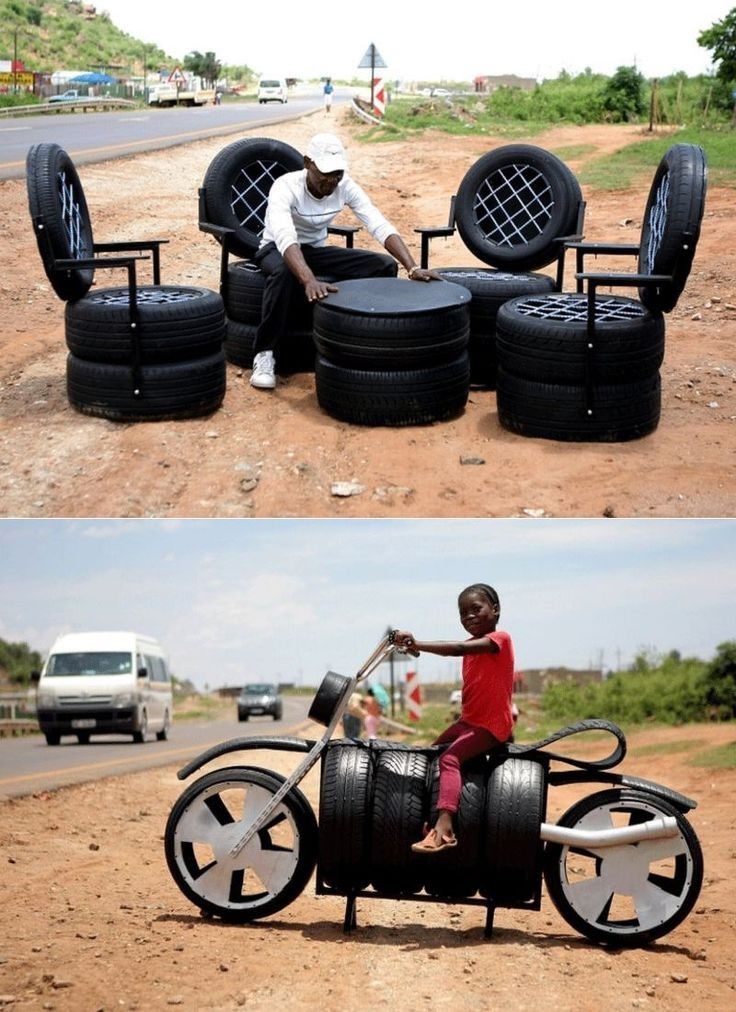 But try to make the drive axle rotate while the other one holds the car in place with the help of a brake. You need powerful brakes, a revving engine, and driving skills.
But try to make the drive axle rotate while the other one holds the car in place with the help of a brake. You need powerful brakes, a revving engine, and driving skills.
On a motorcycle, it's easy to burnout, but on a car, you have to try harder. But the tires will run out very quickly. By the way, for some production cars, for fun, they put the burnout option, which allows you to block the front wheels and burn the rear wheels a little. Pressed the button, turned on D - and push yourself on the right pedal. There is a similar option, for example, in the Ford Mustang.
In general, burnout is not just a useless blowing of smoke to the delight of onlookers. Racing drivers sometimes warm up their tires in this way before starting. For example, this phenomenon is often found in professional drag racing. Before you go on a long straight and set a quarter-mile record, you need to “stretch” (that is, warm up) the tires a little. And now we come to the second way to shorten the life of car tires - drag races. Those who do it professionally know that expensive sports slicks wear out very quickly. But those who like to start with a squeal of rubber from a traffic light in the city should also remember that the life of tires is significantly reduced in this way.
Before you go on a long straight and set a quarter-mile record, you need to “stretch” (that is, warm up) the tires a little. And now we come to the second way to shorten the life of car tires - drag races. Those who do it professionally know that expensive sports slicks wear out very quickly. But those who like to start with a squeal of rubber from a traffic light in the city should also remember that the life of tires is significantly reduced in this way.
It's time to meet our today's hero. Anton Shenderov is a professional drifter and also owns a Tony Motors service station. The guy has several cars on which he moves not only on public roads. The main "working tool" is the Nissan 200SX - one might say, a classic in the world of drifting. The power of the machine is about 500 liters. with., which allows you to mercilessly destroy the rear tires in a matter of minutes.
- When we talk about the durability of car tires in drifting, everything directly depends on the power of the car. If the engine output is relatively modest, then in races you can kill a couple of tires in two to three hours. We are talking about brand new tires from the store. If the engine output in a racing car exceeds half a thousand horsepower, then it is enough for an athlete to make two passes of 40 seconds, and the rubber goes into the trash, - says a professional racer.
If the engine output is relatively modest, then in races you can kill a couple of tires in two to three hours. We are talking about brand new tires from the store. If the engine output in a racing car exceeds half a thousand horsepower, then it is enough for an athlete to make two passes of 40 seconds, and the rubber goes into the trash, - says a professional racer.
It must be taken into account that it is impossible to participate in drifting on any tires. According to the athlete, the cheapest tires that are suitable for professional competitions cost from $100 apiece. It turns out that the most powerful cars spend from $ 200 in 40 seconds. Well, or $5 per second. It is not surprising that tires are the main consumable in drifting. As you understand, this hobby is not cheap, and without sponsors, only very wealthy riders can participate in side sliding competitions.
Ordinary car enthusiasts may have a reasonable question: if the rear tires are used up so quickly, is it possible to transfer the front tires to the rear axle and drive a couple more laps?
- In fact, the front rubber has completely different purposes, and, accordingly, different properties. In order for the front wheels to have good grip and work properly, you need very expensive tires - more expensive than the rear ones. Therefore, it will not work to throw the wheels from the "muzzle" to the rear axle. But I note that the front tires are enough for half the season, or even the season: there the rubber consumption is an order of magnitude lower, - explains Anton.
In order for the front wheels to have good grip and work properly, you need very expensive tires - more expensive than the rear ones. Therefore, it will not work to throw the wheels from the "muzzle" to the rear axle. But I note that the front tires are enough for half the season, or even the season: there the rubber consumption is an order of magnitude lower, - explains Anton.
Top league drift drivers can burn 50-80 tires in a weekend.
With regard to civil use of cars, it is possible to reduce the life of tires without slowing down when cornering. Here the dependence is simple: more rubber squeal during turns or braking - tires will last less seasons.
It is obvious that the level of tire wear in motorsport is affected by the configuration of the track on which the competition takes place. But not everything is so clear-cut here. In normal circuit racing, drivers cannot influence the distribution of the load on the rubber: if there are more left turns on the track, then the tires will wear out more on the outside (right) side. In drifting, drivers themselves change the number of left and right turns, simply by “shifting” the car back and forth, so the configuration of the track plays a smaller role than in other disciplines. But what is really very important is the quality of the road surface.
But not everything is so clear-cut here. In normal circuit racing, drivers cannot influence the distribution of the load on the rubber: if there are more left turns on the track, then the tires will wear out more on the outside (right) side. In drifting, drivers themselves change the number of left and right turns, simply by “shifting” the car back and forth, so the configuration of the track plays a smaller role than in other disciplines. But what is really very important is the quality of the road surface.
- On old pavement, stone chips can literally gnaw through rubber in pieces, so if we are talking about tire durability, I would say that for drifting, the quality of the asphalt surface plays a more important role than the track configuration. As for the number of left and right turns, here you can monitor the wear of the rubber and, in which case, change the left and right tires in places, extending their life, , the athlete says.
Due to the quality of the road surface, tires can be damaged even without any competition: a deep hole or a foreign object on the pavement can even tear new tires. With a strong impact on a hard corner, a "bun" may form on the tire, which will also require its replacement. Especially in the spring on the road, you need to more closely monitor the quality of the canvas. In addition to tires, the more expensive element of the car, the suspension, also suffers in the battle with bumps. And faulty chassis elements are another way to “kill” rubber.
With a strong impact on a hard corner, a "bun" may form on the tire, which will also require its replacement. Especially in the spring on the road, you need to more closely monitor the quality of the canvas. In addition to tires, the more expensive element of the car, the suspension, also suffers in the battle with bumps. And faulty chassis elements are another way to “kill” rubber.
By the way, if one tire is suddenly damaged, and the second has a high degree of wear, it is better to change a pair. Otherwise, there is a risk that during emergency braking (or a quick start), the new rubber will have a better grip, and the car will turn around. This is especially true for older cars without modern ABS and ESP systems.
- We drift for entertainment, so when the pavement is warm, there is much more entertainment, because there is more so-called "hold". In fact, we are constantly fighting to ensure that the rear wheels cling to the asphalt as much as possible. Accordingly, the hotter the asphalt, the better for the pilot. But not better for the tires - they wear out faster if we run on hot surfaces, of course.0092 - a drift pilot shares his experience.
Accordingly, the hotter the asphalt, the better for the pilot. But not better for the tires - they wear out faster if we run on hot surfaces, of course.0092 - a drift pilot shares his experience.
"Civilian" motorists should also remember that on hot summer asphalt, rubber wear increases significantly.
Summer and winter tires have different composition. In particular, for "winter" a mixture with a larger amount of rubber is used - this allows you to make the tire softer. Most effectively, such rubber works out at sub-zero or near-zero temperatures. For the summer season, such a tire is not suitable. Even if you drive carefully and don't notice a difference in operating conditions, remember that heat and summer sun will wear down a winter tire faster.
- In summer, winter tires wear out much faster. I think one summer season for winter tires can be equated to two or even three cold seasons. As for all-season tires, it is clear that this is a compromise. It has its pros and cons. I would not rule out "all season": after all, it allows many people to save money. You just need to approach this issue with your head and understand what such rubber, , is capable of, advises Anton.
It has its pros and cons. I would not rule out "all season": after all, it allows many people to save money. You just need to approach this issue with your head and understand what such rubber, , is capable of, advises Anton.
Affects the life of tires and how they are stored.
— Car racers are well aware that if slicks or semi-slicks are stored outdoors or in an unheated room in winter, the rubber properties deteriorate, it tans and does not demonstrate the properties that a similar tire model that was stored correctly, , says Anton.
According to the expert, it is storage conditions that affect the safety of rubber: tires should winter in a dry and preferably warm room. At the same time, there is not much point in walking and turning the wheels every month (there are such motorists).
Incorrect tire pressure can kill or at least shorten its life. Here everything depends on the conscience of the driver. The minimum program is every time you get into the car, go around it and visually run your eyes over the wheels: a heavily flat tire will be visible to the naked eye. If you drive even a couple of kilometers on a completely flat tire, you can throw it away. Modern cars have pressure sensors that help a lot in this matter - the main thing is not to ignore the warnings of the on-board computer.
The minimum program is every time you get into the car, go around it and visually run your eyes over the wheels: a heavily flat tire will be visible to the naked eye. If you drive even a couple of kilometers on a completely flat tire, you can throw it away. Modern cars have pressure sensors that help a lot in this matter - the main thing is not to ignore the warnings of the on-board computer.
- I also advise you not to neglect the recommendations of specialists in tire fitting. When you are told to clean the rust from the wheels, use sealant or replace the tire inflation nipples, this is not just. Even a small nuance can lead to the fact that the tire will constantly deflate. In addition, I advise you to do a basic check of the car at least once a week. By basic check I mean check fluid levels, tire pressure, brush inspection, - expert advises.
According to Anton, every professional racing driver has a pressure gauge. It is one of the most important measuring instruments in motorsport. Another non-obvious advice from our interlocutor is, if possible, check the spare tire (if you have one) at a tire fitting. It’s good if the wheel stored in the trunk is never useful to you, but it’s better that it is always “ready”.
Another non-obvious advice from our interlocutor is, if possible, check the spare tire (if you have one) at a tire fitting. It’s good if the wheel stored in the trunk is never useful to you, but it’s better that it is always “ready”.
Year of manufacture of a tire is one of the most important parameters when it comes to tire life.
— From my racing experience, I can say that the difference between a tire that has been in storage for three years and the same tire that has just left the factory is very big. This applies to both driving characteristics and service life. In my opinion, if the tire has been in the store for more than three years, it should be sold at a discount and the buyer should be warned about this. I have already concluded for myself that tires that are more than five years old are no longer good for anything. And it doesn't matter if they drove this rubber or not,0092 - says the race car driver.